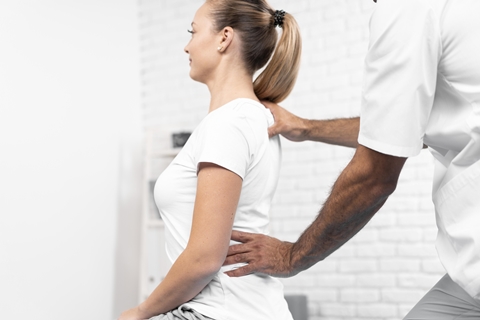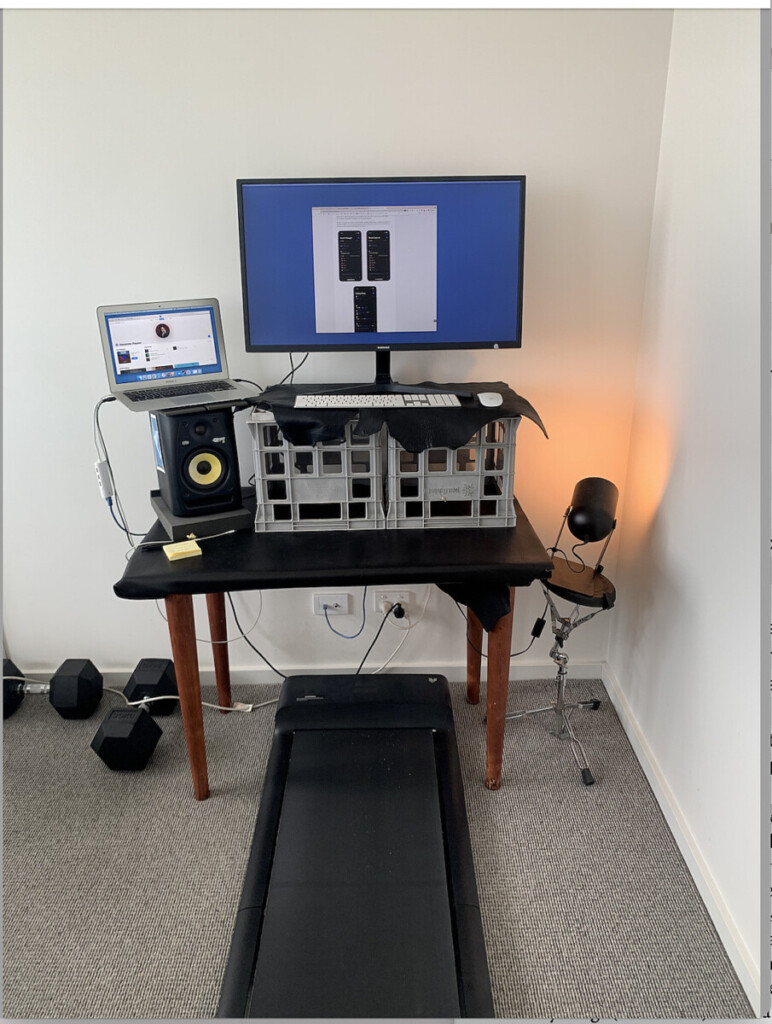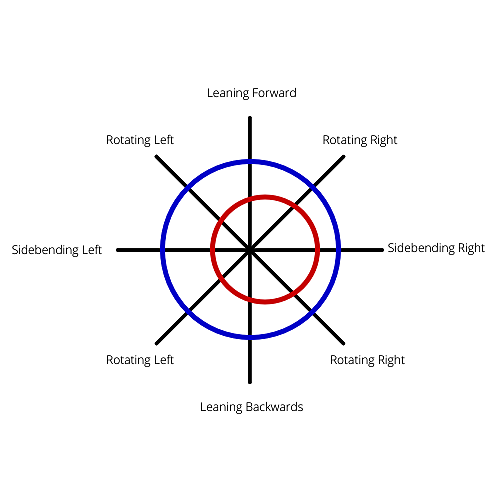BACK PAIN WHEN SITTING
Everyone will tell you to sit less for lower back pain. I’m going to explain why that shouldn’t be the goal. Much like a mechanic telling you to drive less to avoid car problems, telling someone to sit less isn’t a solution if you’re experiencing lower back pain while sitting.
When you’re the one with lower back pain, you don’t need someone giving you impractical advice. You just want answers. ‘I need to sit for work, can you help me?’
WHAT DOES THE RESEARCH SAY ABOUT LOWER BACK PAIN WHILE SITTING?
Frequent movements prevent any specific structure becoming overloaded. That is the principle that guides our framework of sitting. But it took a while for researchers to realise this.
Originally (and still), we’ve been told that if you were to assume a position where your knees and hips were at 90 degrees – and maintained it – you would be forever immune to lower back pain.
The early research direction had this gist, searching for the perfect posture to prevent lower back pain while sitting. They ended up finding that it was like trying to find Bigfoot, only less exciting. So the research base widened, and the concept of an ideal sitting posture gradually morphed into ‘Dynamic Sitting Posture’, where positions are changed throughout a session of sitting.
The reason that they moved away from one perfect position was that movement is what changes the loads through tissues in your back. If you were to sit upright in a chair with no back rest, most of the load is distributed through the muscles; whereas, if you were to slouch backwards on a chair, more of the weight goes into the lower back discs and ligaments, which can cause back pain. One isn’t better than the other; they both need to be used at times to create a healthy back.
Studies showed that when comparing seated subjects with back pain vs without, the subjects with back pain use less micro-movements or large shifts in posture while sitting. This means the subjects with back pain sat more still. The research base is still growing in depth and breadth, yet the principle remains the same: frequent movements prevent any specific structure becoming overloaded.
STANDING DESKS, A PANACEA?
Ok, but all this can be avoided if you use a standing desk right? Well…not exactly. Remember how we were talking about movement being one of the differences between those with and without lower back pain (I hope you do, it’s only just up there ^)?
Standing desks help a lot in the fact that they allow you to change your position (if it’s an adjustable one) from seated to standing. However – and this is important – they may not help if all you do is stand because now you’re like an assembly line worker, many of whom experience back pain. If you’ve ever done monotonous standing work, you would know the absolute ecstasy of falling on the couch at the end of the day. That pleasure is your body’s realisation of the burden being lifted from the overworked tissues in your back.
The other less feasible option is to adopt the approach of my housemate (pictured). Tired of his constant sitting, and using his lockdown ingenuity, he added milk crates underneath his screen, and then added a treadmill found on Gumtree. This gives him the addition of constant movement on the treadmill to his sedentary work day. I’m not sure how practical this is for the average Joe trying to manage 3 home schooled children, but hey, he assures me it’s life changing.
Picture 1. The Treadmill Desk
THE SITTING ATHLETE
So if we think about someone stuck at home, without access to a standing desk and/or treadmill desk, it becomes easy to give throwaway advice like ‘sit less’.
To avoid that pitfall we use a term to describe our outlook of seated patients: the Sitting Athlete. (Pro-tip: don’t go around naming yourself the sitting athlete if you want to keep your co-workers as friends.) What calling someone the Sitting Athlete does is it reorients ourselves to think correctly about the problem and the solution. Runners run, weightlifters lift, and sitters sit. They have an event (the work day) and they have a uniform (business attire) but they don’t have any training to mitigate the causes of back pain.
How can we expect ourselves to sit every single day without upkeep (training)?
I haven’t met someone yet who’s come in to see me for sitting training but I’ll give them $50 when they do. It would seem like sitting is too ‘easy’ an activity to train for. While marathon athletes are purging demons from their mind as they push their bodies to the limit, you’re watching Pride and Prejudice or writing passive-aggressive emails to colleagues. ‘Easy’ you say. But the fact that you’re experiencing lower back pain while sitting tells me that it’s beyond your movement capabilities. We need to train you to become a better sitter – or at least so that you can get through a work day without experiencing back pain.
Figure 1. Sitting Axis
If you imagine your sitting capabilities plotted on this graph (Figure 1), there would be a certain amount that you could lean forward without experiencing lower back pain. That goes the same for leaning to the side, rotating, and leaning back. As your capacity for movement expands, your ability to explore your space increases so that now, you could sit in positions that you previously couldn’t, for longer.
A patient named Clarissa came to see me early 2021. Like many others in lockdown, her lower back pain had steadily increased since early 2020. She had tried massages, creams, medications, and certain stretches to no avail. Looking at her thoracic spine (where your dorsal fin would be if you were a dolphin), her graph looked like this (reduced SBing L).
Figure 2. The concept of Clarissa’s movement graph beforehand (red) & after treatment (blue).
So using her movement and our hands, we created the movement that she couldn’t do well which then allowed the spine to sit more comfortably. We expanded her capacity so that it looked like figure 3.
That treatment would be different for every person experiencing lower back pain. For some it would involve only moving in certain directions, some it would involve using small dumbbells, and others slow movements. Some patients we would train their core to move in all 3 planes, for some it would be in the shoulders, and others the hips.
Although we treat every patient differently, that doesn’t mean that we can do anything and achieve the same results. Certain principles need to govern our approach, otherwise we’ll get lost in the woods. 1) What is essential to all of our training principles is that the body moves in all 3 planes, so we train in all 3 planes. 2) The body is a system so that means that your hips affect your spine, your shoulders affect your spine etc. To improve the way that our back moves while seated means that we need to train other relevant areas as well to avoid lower back pain while sitting. 3) Lastly, we never want to train into the pain. The pain is there for a reason as an alarm system and we need to stay away from it.
Here is a gentle mobilisation for all 3 planes in our hips, spine, and shoulders. This may not be good for everyone but is the closest to a safe, helpful-for-all exercise.
Regency For Expats – Fast Class
AN IMPORTANT CAVEAT FOR LOWER BACK PAIN WHILE SITTING
This is all under the proviso that sitting for long periods is generally not good for our health e.g. sitting is the new smoking. A sedentary lifestyle puts us at greater risks for heart disease, diabetes, and some cancers. So what I’m not saying is that we need to sit more. But what I am saying is:
There are solutions for your lower back pain while sitting that don’t require you to change your job, buy a treadmill desk, or maintain perfect posture incessantly. They do require a bit of movement training based on your individual ability.
Train yourself to move better. Your body will thank you for it. If you want help to ease your back pain call (03) 9888 6176 to have your questions answered or you can book an appointment online.
Your Osteopath,
Nat




